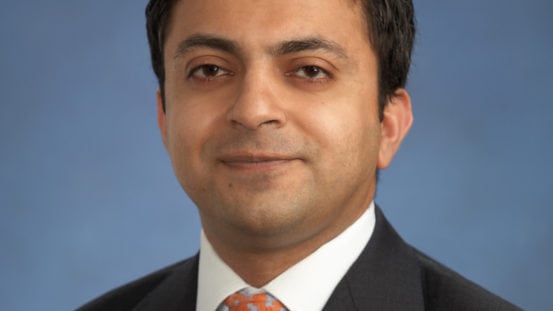In 2013, emerging markets experienced significant financial distress when investors reacted to public statements by the US Federal Reserve on winding down of quantitative easing policies.
With the US raising interest rates and the European Central Bank expected to end its asset buying programme this year, could emerging markets tumble again?
“We don’t think it will play out the same way,” Bunglawala (pictured), who is head of global portfolio solutions at Goldman Sachs Asset Management, told Portfolio Adviser’s sister publication Fund Selector Asia on a recent visit to Hong Kong.
“There have been a number of improvements in the macro balances of many emerging markets, as represented by their current account deficits,” he said.
Also, there has been a significant adjustment in valuation of emerging markets’ currencies. “A range of emerging markets went from being very significantly overvalued, based on our models, to very significantly undervalued,” he explained. The Indonesian rupiah, which Bunglawala said is part of this trend, lost around 30% of its value against the dollar between 2013 and 2018.
However, the issue is debateable. According to the Institute of International Finance, the aggregate current account surplus of emerging markets is at its lowest since 1990s, questioning their strength to weather another sentiment-driven sell-off like taper tantrum.
In the blender
Bunglawala heads the group managing multi-asset strategies, including the Goldman Sachs Emerging Markets Multi-Asset Portfolio, launched in December 2017.
The portfolio has an equity sleeve accounting for 40%, and three debt sleeves — local-currency, hard-currency and corporate bonds — which make up the rest. Each sleeve is managed by a separate team.
The fund aims to deliver an average total return of 8% gross of fees over the long term, with a target volatility below 13%.
The main risk, according to Bunglawala, comes from market volatility, which is widely believed to be on an increasing trend after a long period of historic lows. Although the multi-asset approach is meant to smooth out “market potholes”, short-term drawdowns are likely when they happen.
Managing a multi-asset EM fund involves consideration of five primary drivers of risk: equity beta, interest rates, currencies, credit spreads and security selection (alpha). According to Bunglawala, the fund has a risk budget within which exposure to those drivers are deployed in a balanced way.
Additionally, market-cap weighted EM equity indices have a bias toward Asia, while debt indices have a bias toward Eastern Europe and Latin America. He believes blending an equity and a debt strategy goes part way toward mitigating this regional bias.
“We continue to have a pro-growth bias in our portfolio,” he added. “The global macro backdrop is still positive. We’re overweight emerging market equities versus debt, we’re underweight US rates, as represented in the portfolio by US dollar-denominated emerging market debt. In the later stages of an expansion phase credit spreads begin to widen. This will principally start in the US and broadly spread to global markets.”
“We still think the macroeconomic cycle has some time to run,” he continued. “Our models suggest at least another 18 months, but that makes us a bit more cautious in our directional views on credit markets.”










